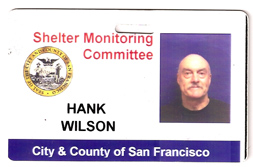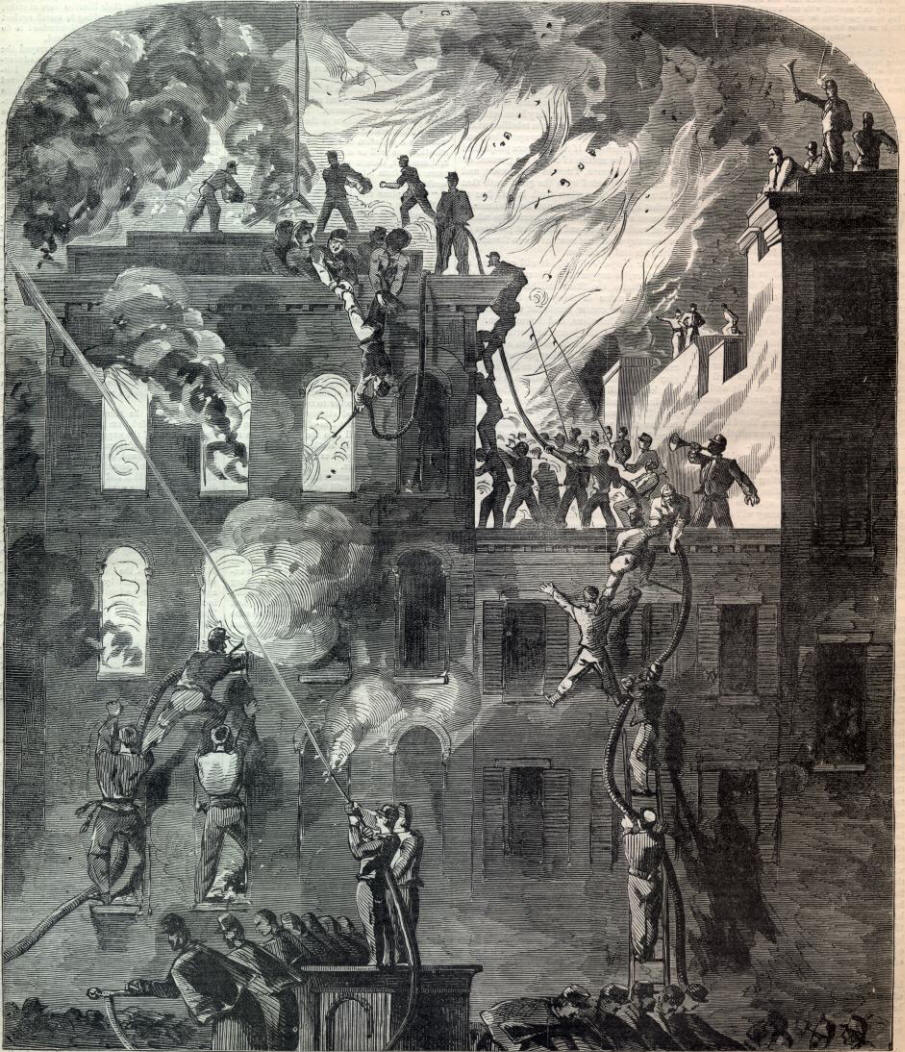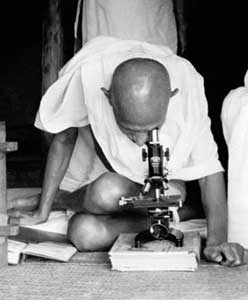The Blagojevich complaint: hospitals and political corruption
The news about Governor Blagojevich's alleged corrupt behavior has focused, understandably, on his scams to try to get payback for Obama's Senate seat. Intrigued by some incidental details about a shakedown of a children's hospital CEO, I searched for the word "hospital" in the affidavit. It appears 22 times, with two separate incidents, the first being about a "Certificate of Need" for another hospital and the other being the Children's Memorial incident. The "Certificate of Need" saga will be familiar to those who were already following the Tony Rezko trial, but since I hadn't realized how deeply the Rezko trial was entangled in hospital construction, I include this along with the Children's Hospital CEO.
It's just a reminder that healthcare, perhaps the largest segment of our GDP, is just another industry, immune neither to shakedowns by the corrupt, or corruption of its own.
Here are the appearances of the word "hospital" in the affidavit.
<<>>
The first group of references concerns a small hospital which a planning board staff felt was unnecessary because there were already plenty of hospitals in the area. The hospital chain wanted to build a hospital anyway. Imad Almanaseer, who provided the crucial vote from the planning board to overrule the staff recommendation not to allow the hospital to be built, is a physician. It was his vote that allowed political corruption to overrule any semblance of the sensible allocation of healthcare resources. For handy reference I've inserted the title "Doctor" before his name, although the affidavit does not do this in the original.
35. As described more fully in the following paragraphs, Mercy Hospital, which sought permission from the Planning Board to build a hospital in Illinois, received that permission through Rezko’s exercise of his influence at the Planning Board after Rezko was promised that Mercy Hospital would make a substantial campaign contribution to ROD BLAGOJEVICH. Rezko later told a member of the Planning Board that Mercy Hospital received the permit because ROD BLAGOJEVICH wanted the organization to receive the permit.
36. Levine’s criminal activities included his abuse of his position on the Planning Board to enrich both himself and Friends of Blagojevich. The Planning Board was a commission of the State of Illinois, established by statute, whose members were appointed by the Governor of the State of Illinois. At the relevant time period, the Planning Board consisted of nine individuals. State law required an entity seeking to build a hospital, medical office building, or other medical facility in Illinois to obtain a permit, known as a “Certificate of Need” (“CON”), from the Planning Board prior to beginning construction.
37. Levine, as well as Planning Board members Thomas Beck and [Dr.] Imad Almanaseer, testified under oath at the Rezko Trial. Beck testified that he asked Rezko to reappoint him to the Planning Board and that Beck thereafter followed Rezko’s directions regarding which CON applications Rezko wanted approved. Beck testified that it was his job to communicate Rezko’s interest in particular CONs to other members of the Planning Board, including [Dr.] Almanaseer, who were loyal to Rezko. Beck testified that he understood that Rezko spoke for the Blagojevich administration when Rezko spoke to Beck about particular CONs. [Dr.] Almanaseer testified that Beck instructed him that Rezko wanted [Dr.] Almanaseer to vote a particular way and that [Dr.] Almanaseer should follow Levine’s lead in voting on CONs. [Dr.] Almanaseer testified that before certain Planning Board meetings, he received notecards from Beck indicating how to vote on certain CON applications. Beck testified he provided these notecards to [Dr.] Almanaseer and certain other members of the Planning Board to communicate Rezko’s directions about certain CON applications.
38. During his testimony, Levine described a plan to manipulate the Planning Board to enrich himself and Friends of Blagojevich. The plan centered on an entity commonly known as Mercy Hospital (“Mercy”) that was attempting to obtain a CON to build a new hospital in Illinois. Levine knew the contractor hired to help build the hospital. In approximately November 2003, on behalf of the contractor, Levine checked with Rezko to determine whether Rezko wanted Mercy to obtain its CON. Rezko informed Levine that Mercy was not going to receive its CON. According to Levine, he asked Rezko whether it would matter to Rezko if Mercy’s construction contractor paid a bribe to Rezko and Levine and, in addition, made a contribution to ROD BLAGOJEVICH. Levine testified that Rezko indicated that such an arrangement would change his view on the Mercy CON.
39. Levine’s testimony regarding Rezko’s actions to change the Planning Board decision concerning Mercy’s application for a CON based on contributions for ROD BLAGOJEVICH is confirmed by attorney Steven Loren. Loren testified at Rezko’s criminal trial and, before that, in the grand jury. According to Loren, in approximately December 2003, Levine informed Loren that Rezko was against the Mercy CON. According to Loren, Levine relayed to Loren a conversation between Rezko and Levine during which Levine asked Rezko whether a political contribution to ROD BLAGOJEVICH would make a difference for Mercy’s CON, and Rezko responded to Levine that such a contribution might make a difference.
40. Thereafter, and confirmed by the testimony of Levine, Beck, and [Dr.] Almanaseer, as well as recorded conversations, Rezko switched his directions to Beck and informed Beck that Mercy was to receive its CON. According to [Dr.] Almanaseer, although he previously had been told by Beck that Rezko did not want Mercy to receive its CON, he was later told that there had been a change and that Rezko now wanted Mercy to receive its CON.
41. Mercy received its CON as a result of a controversial and irregular vote at a public Planning Board meeting. [footnote: There was extensive testimony regarding the irregularity of the vote at the Planning Board meeting. In summary, during the vote, Levine got up from his seat and went to speak to Beck and to [Dr.] Almanaseer. After these discussions, [Dr.] Almanaseer then changed his vote to be in favor of Mercy receiving its CON. Beck then voted in favor as well and by a vote of 5 to 4, Mercy’s application for a CON passed.] The vote brought significant publicity to the Planning Board and ultimately led to the disbanding of the Planning Board. [Dr.] Almanaseer testified under oath in the grand jury that not long after the Planning Board vote on Mercy’s CON he saw Rezko at a fundraiser. According to [Dr.] Almanaseer, he was still embarrassed about what had occurred at the Planning Board vote on Mercy’s CON and Rezko’s role in the vote. [Dr.] Almanaseer testified that he asked Rezko why Rezko had switched the vote on the Mercy CON. According to Almanaseer, Rezko stated: “The Governor wanted it to pass.” [Dr.] Almanaseer understood the reference to “Governor” to be a reference to ROD BLAGOJEVICH.
[Before moving on, let's celebrate the internet's ability to provide some historical context, here from Crain's Chicago Business. Here's an excerpt from a 2004 article I found about the original decision:
Mr. Levine and Jacob Kiferbaum, president of Deerfield-based Kiferbaum Construction Corp., serve together as trustees of Rosalind Franklin University of Medicine and Science, formerly known as Chicago Medical School. Mr. Kiferbaum also contributed $45,000 to former state Attorney General Jim Ryan's 2002 campaign for governor, for which Mr. Levine served as finance director.
Mr. Levine, an attorney and investor from Highland Park, didn't return calls seeking comment for this story. A transcript of the April 21 meeting shows he led the board in discussing the Mercy application, encouraging members to vote in favor of the hospital and to disregard approval criteria he called "hopelessly outdated.''
During the roll call vote on the application, Mr. Levine voted for approval and walked across the room to talk with Imad Y. Almanaseer, a Glenview physician, who had abstained, according to two people who attended the meeting. After the conversation with Mr. Levine, Dr. Almanaseer changed his vote to "yes,'' giving the Mercy project the fifth vote needed for approval.
Dr. Almanaseer is resigning from the board July 1, when his term expires. He didn't return calls last week, but in an interview several weeks ago, he denied feeling pressured to vote in favor of Mercy.
"I honestly don't feel it,'' he said. "(Mercy) made a case for the need for more physicians in that area, and we agreed.'']
<<>>
The second group of references comes in relationship to the desire of the governor to exchange an increase in reimbursements for pediatric care for a campaign contribution from a Children's Hospital CEO:
65. According to Individual A, on October 8, 2008, during a discussion of fundraising from various individuals and entities, the discussion turned to Children’s Memorial Hospital, and ROD BLAGOJEVICH told Individual A words to the effect of “I’m going to do $8 million for them. I want to get [Hospital Executive 1] for 50.” Individual A understood this to be a reference to a desire to obtain a $50,000 campaign contribution from Hospital Executive 1, the Chief Executive Officer of Children’s Memorial Hospital. Individual A said that he/she understood ROD BLAGOJEVICH’s reference to $8 million to relate to his recent commitment to obtain for Children’s Memorial Hospital $8 million in state funds through some type of pediatric care reimbursement. As described in further detail below, intercepted phone conversations between ROD BLAGOJEVICH and others indicate that ROD BLAGOJEVICH is contemplating rescinding his commitment of state funds to benefit Children’s Memorial Hospital because Hospital Executive 1 has not made a recent campaign contribution to ROD BLAGOJEVICH.
66. According to Individual A, during this same meeting, ROD BLAGOJEVICH began discussing recent media reports about the possibility that Antoin “Tony” Rezko was cooperating with the government. According to Individual A, at one point in the
conversation, ROD BLAGOJEVICH said words to the effect that he was not concerned about Rezko’s cooperation because he was not involved in illegal activity with Rezko. According to the Individual A, Fundraiser A then said words to the effect of, “unless
prospectively somebody gets you on a wire.”
...
a. On the morning of November 12, 2008, ROD BLAGOJEVICH talked to Fundraiser A. During the course of the conversation, which principally concerned the status of campaign fundraising efforts, Fundraiser A told ROD BLAGOJEVICH that Fundraiser A had never heard from Hospital Executive 1. Fundraiser A said, “I’ve left three messages there so I’m gonna quit calling. I feel stupid now.” ROD BLAGOJEVICH asked when the most recent call was, and Fundraiser A replied that it was two days ago. ROD BLAGOJEVICH said that if “they don’t get back to you, then, then, last resort is, I’ll call.”
b. Later on November 12, 2008, at approximately 2:14 p.m., ROD BLAGOJEVICH spoke with Deputy Governor A, a Deputy Governor of the State of Illinois. The following exchange began the conversation:
ROD BLAGOJEVICH: The pediatric doctors – the reimbursement. Has that gone out yet, or is that still on hold?”
DEPUTY GOVERNOR A: The rate increase?
ROD BLAGOJEVICH: Yeah.
DEPUTY GOVERNOR A: It’s January 1.
ROD BLAGOJEVICH: And we have total discretion over it?
DEPUTY GOVERNOR A: Yep.
ROD BLAGOJEVICH: We could pull it back if we needed to – budgetary
concerns – right?
DEPUTY GOVERNOR A: We sure could. Yep.
ROD BLAGOJEVICH: Ok. That’s good to know.
c. On November 12, 2008, at approximately 8:26 p.m., Fundraiser A called ROD BLAGOJEVICH and reported the status of fundraising efforts. During the conversation ROD BLAGOJEVICH instructed Fundraiser A to call Lobbyist 1 the following day and ask Lobbyist 1 what to do about the fact that Hospital Executive 1 is not calling Fundraiser A back and inquire whether it was possible that Individual A had instructed Hospital Executive 1 not to call back (see Paragraph 65). ROD BLAGOJEVICH asked, “what do we do with this guy, [Hospital Executive 1]?”
d. On November 13, 2008, at approximately 10:05 a.m., ROD BLAGOJEVICH talked with Fundraiser A. The discussion concerned the status of fundraising efforts. During this call, ROD BLAGOJEVICH asked about Highway Contractor 1. Fundraiser A stated that Lobbyist 1 is still working with Highway Contractor 1. Fundraiser A also advised ROD BLAGOJEVICH that he will be meeting Lobbyist 2 to meet with an individual at Weiss Memorial Hospital. ROD BLAGOJEVICH states: “Yeah, now be real careful there. I mean, the FBI went to see [Lobbyist 2]. You understand?” Fundraiser A also said that he had a call into Individual A and that Fundraiser A will talk to Individual A about Hospital Executive 1.
...
g. On November 14, 2008, ROD BLAGOJEVICH talked to Fundraiser A. During the conversation Fundraiser A told ROD BLAGOJEVICH that he had spoken with Individual A, and that ROD BLAGOJEVICH needed to call Hospital Executive 1. ROD BLAGOJEVICH said that he would call him.
















